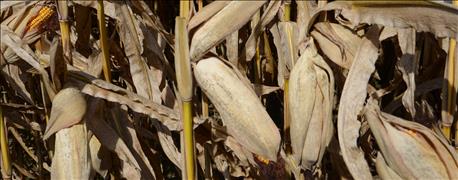
What will you find when you walk into your cornfields just before harvest this year? Will every ear be perfect and free from damage? That might happen in a perfect world, but probably not in this one. Your hope is there will be far more perfect than imperfect ears.
Here are four ears that you don’t want to find too many of this fall. They represent minor to somewhat more than minor issues.
1. loose husks or ears protruding from husks

If it’s a dry fall and if the field is not along a tree line, this may not be a big deal. Some hybrids vary in how well husks cover ears to the tips and how tight they are around the ear, notes Dave Nanda, crops consultant for Seed Consultants Inc., sponsor of Crop Watch ’16.
Loose husks may actually aid in drydown. The problem comes if damage occurs to the ears since the ears themselves are exposed, and then secondary problems develop.
2. poor pollination
Whether it was dry weather, genetic tendency or other environmental conditions, poor kernel set on these ears (below) would contribute to lower yield if too many were found in the same area. It’s difficult to tell where kernels aborted and where pollination never occurred. When poor kernel set is away from the tip, poor pollination often is the cause.

3. blank tips and inconsistent ear size
A shift toward more stressful environmental conditions near the end of pollination and into early grain fill often causes aborted kernels and blank cob tips. When you find an inch or more of cob at the tip, kernels likely aborted. Some hybrids tend to fill tips better than others, but a blank cob doesn’t fill the hopper.
In this case, there was also a problem with inconsistent ear size. Nanda says it’s important to track down the reason for the small ear. Was it on a stalk too close to another one? Or was some other factor involved?

4. bird feeding
The only positive if your worst problem in your field is that birds fed on some ears is that they don’t usually feed on enough ears to impact yield. The only exception might be on fields surrounded by woods. This ear appears to have been attacked early and often by birds or another predator feeding on kernels.

About the Author(s)
You May Also Like




